We all want that perfect, flawless tan that makes our skin look gorgeous.
These tanning tips will help you reach the exact tan you want, with a little bit of persistence and some patience as well. It all happens in good time.
Tanning can be dangerous when you don’t know how to do it correctly. These tips help you reach the tan level that you want, but also keep consistent, even tanning in mind. It’s time to tan safely, and ultra effectively.
Note: These tips are a mixed bag of indoor and outdoor tanning techniques and tips.
If you’d like to see a graphical breakdown of the tanning tips, we got you covered:

Share this Image On Your Site
Contents
#1 Prepare Appropriately
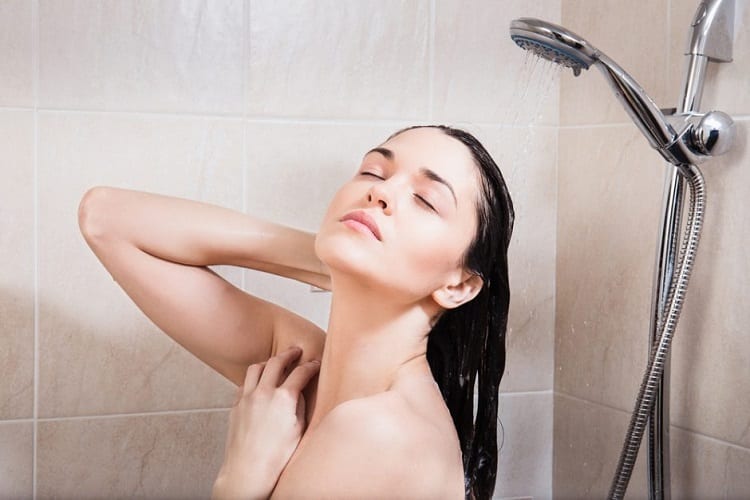
If you don’t prepare your skin ahead of time, you’re going to have one hell of a time getting a solid tan.
Preparing your skin should include a ritual, and keep in mind that whether you’re tanning indoors or outdoors, this is the most important part of tanning.
Failure to prepare your skin properly means that it doesn’t matter just how well you do during tanning, because the results won’t be what they could have been.
- Shower: Before you head to a tanning bed, your roof, or to the beach, you need to start with a clean slate. Some people get tans and then wonder why some areas look splotchy. That’s because dirt or dead skin accumulated in one area, and acted like a filter that didn’t let sunlight through. Shower beforehand and scrub your skin properly to remove dirt, debris, and stuck-on sweat.
- Exfoliate: You can do this the night before, but you should exfoliate to remove as much dead skin as possible before actually heading to your desired tanning spot. This is going to not only ensure you won’t receive a splotchy tan, but you’ll get an even bronze across everywhere that’s in direct sunlight (or tanning bed light).
- Avoid Deodorant: Most deodorants have aluminum in them, which can actually become a real problem during tanning. Yes, you’re going to sweat, but it’s okay; just focus on getting the tan.
- Remove Jewelry: No rings, necklaces, watches, bracelets, earrings, or anything of the soft. If you have a belly button ring, remove that as well (the metal is just going to get hot anway). This avoids tan lines, but it’s also just good to leave these items at home during tanning anyway.
- Moisturize: Leading up to your tanning day, make sure you’re using moisturizer. Hydrated skin will tan better than dry skin, and reduce flaking (plus the possibility of sunburn) at the same time.
Does preparation sound exhausting?
Yes, it sure does, but depending on how consistent and flawless you want your results to be, it’s all worth it. Be sure to drink a lot of water on your day of tanning while you’re at it.
2. Do Not Use Sunbeds
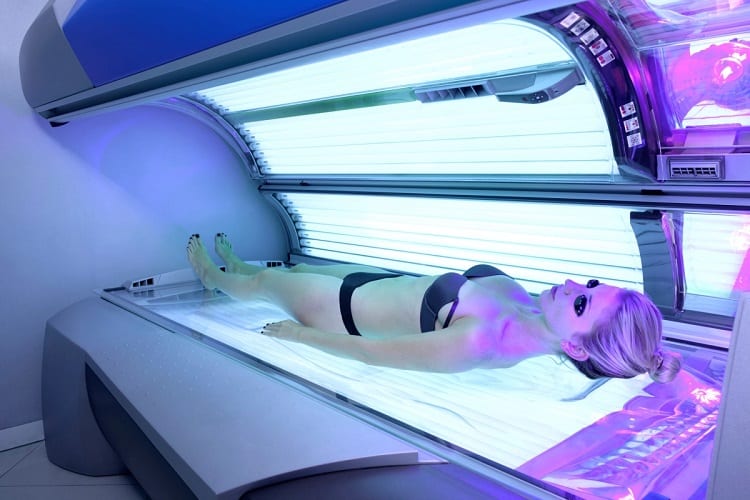
These cheap knock-off tanning beds are basically just big, person-warming, cancer-causing pods. Sunbeds are designed to warm your skin and give you that sunkissed feeling, but they’re just going to cause potential burns and they can increase your risk of cancer.
According to leading London scientists, these sunbeds output UVA rays, which are not what you want when tanning.
You want UVB rays, which are the good ones that stimulate vitamin D production in the skin. UVA rays are cancer-causing, and can spike your cancer risk by an alarming 75% or more.
3. Stick to SPF 30
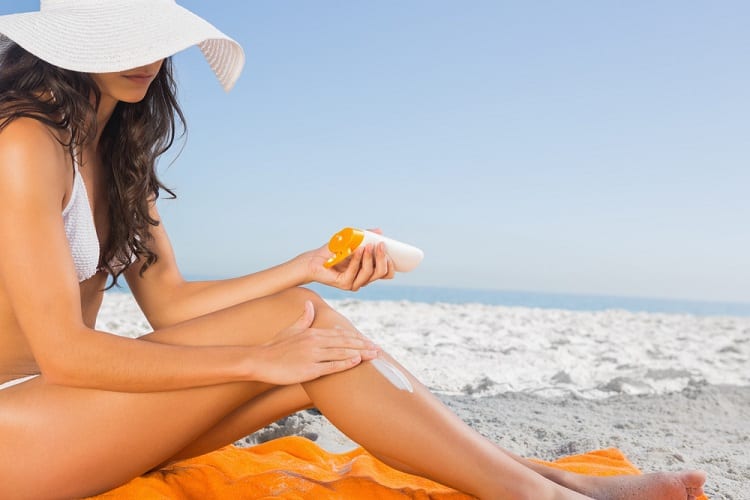
You should wear sunscreen when tanning, or sun tan lotion. However, many people make the mistake of going with sunscreen that is too strong.
Hooray, you’re mitigating your risk of sunburn and skin cancer, but… you’re also nullifying any tanning power.
SPF 30 has the power to block out UVA, but it rests on the fine line between that and blocking out UVB rays. You want those UVBs to come through and actually tan your skin.
Now, are UVB rays really “good” rays?
Not necessarily. They’re also responsible for cancer to some degree, but that’s why we want that mixed layer of protection. With SPF 30 you block out anywhere from 70% to 90% of UVB rays.
SPF 50 will block out about 97-98% (none are 100% effective), which is good for your health, but bad for your tan.
The only thing you really have to pay attention to with SPF 30 is the application time. You might have to apply another layer in a half hour after your initial lathering.
Most sunblocks and sunscreens will have tanning directions on the bottle. Just assume thirty minutes for SPF 30, and if it’s SPF 50, you have roughly two hours before needing to apply more.
4. Pay Attention to Your Tanning Oil
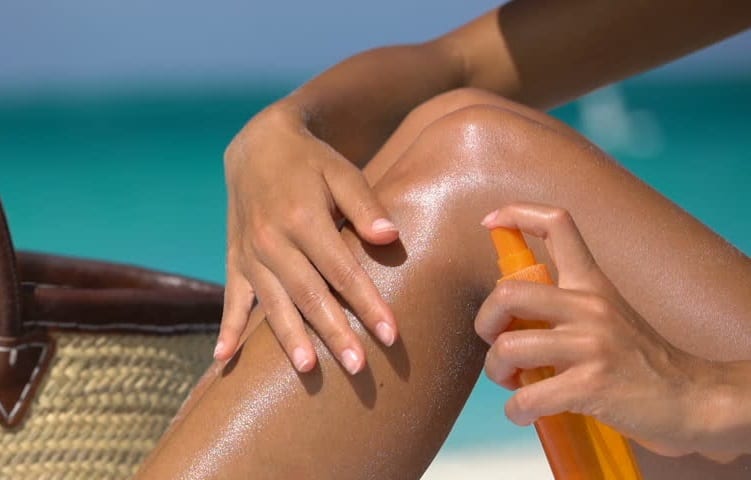
Already grabbed the best tanning oil out there?
That’s great, but now you have to take a look at whether or not it’s designed for outdoor tanning, or better suited for indoor tanning.
This actually matters quite a bit. Because tanning beds have direct UVB light, the protection in indoor tanning lotion is significantly different from what you’ll find in outdoor tanning lotion.
It’s not necessarily better or worse, but it is formulated specifically for harsh, head-on UVB light. Outdoor tanning lotion is better suited to handle heat and reduce sunburns, since you’ll be getting a mix of UVA and UVB rays.
5. Do Not Tan All Day
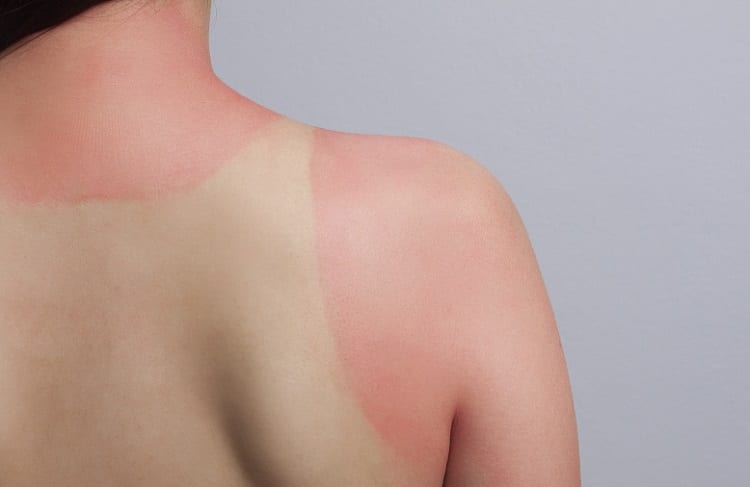
Tanning is a timed thing. You can overdo it, and at a certain point, your skin basically plateaus (hence when you go from “getting some color” to looking like a freshly boiled New England lobster).
After this point, the pigmentation of melanin in your skin stops, and it just starts being harmful.
However, you may be able to get away with more tanning time (meaning fewer tanning sessions) than your friend. If you have fair skin, the cutoff is usually around forty-five minutes to an hour. You really don’t want to overdo it with fair skin.
But if you have medium skin tones, like a light natural tan or bronze color already, you can stay out for about two hours. For darker and black skin, you can push it up to about three hours, but after that point you’re not really doing your skin any favors.
6. Sling it in the Shade

You shouldn’t spend all of that time we just mentioned in direct sunlight. Bathe for about twenty to thirty minutes in the sun, and then kick it in the shade for a short while.
If you want a longer-lasting tan, do this every time you go tanning. This reduces the burn in your skin or direct reaction, so your melanin still transforms, but you kind of take some steam off of your skin.
This is great for reducing the risk of sunburns, but it also helps you to get that even tone you want.
7. Flip it, Switch it Around

In a tanning bed, your goal is to get an even tan. The UVB lights are doing most of the work, sure, but you also have to position yourself the right way to ensure you don’t get tan lines.
When on your back, the UVB lights underneath will tan your behind. However, depending on how you’re built (or what gains you’ve made), you might end up with tan lines between the base of your buttocks and your thigh.
Bend your knees slightly upward (that way you don’t get tan lines in awkward creases of your knees, either), and hold this position.
Raise your arms above your head slightly so the lights can shine light on them properly.
You should spend some time like this, then flip over for an equal amount of time. Know the time before you go in so you can spend one to two minutes on each side as well for an all-around even tan all over your entire body.
8. Respect the Timer
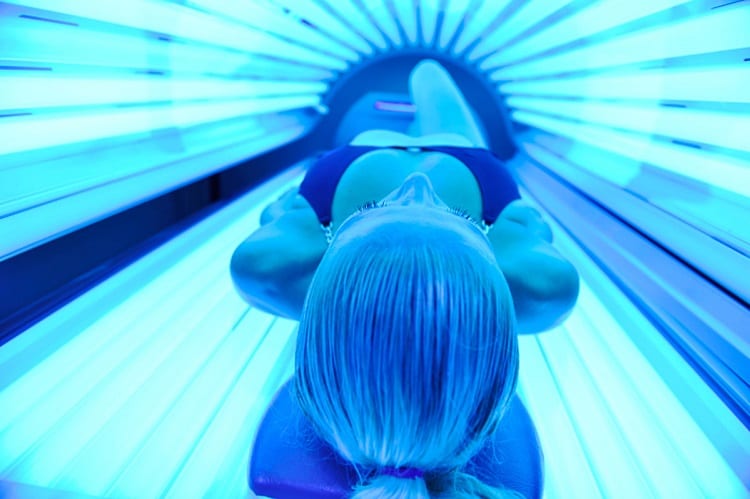
Going with indoor tanning?
That’s great, and time-effective (plus you can tan in the nude with nobody to judge you), but respect the timers built into the beds.
We’re still dealing with cancer-causing UV rays, and while your skin is designed to handle them to a certain point, your skin is not indestructible. It has its limits.
If you want a bronzer tan, you’re going to have to wait the appropriate amount of time and come back. This can feel like a gimmick put in place by tanning bed studios, but it’s actually a safety and health risk to go into a tanning bed for longer than the timer suggests.
9. Eat More Carrots (Seriously, it Helps)

Ever read about tan accelerating sunscreens, lotions, or creams?
They’re a load of hyperbole. These cannot make the melanin in your skin produce a dark pigment any faster, and they’re not really offering you much protection.
There’s nothing that can make your melanin change pigment faster. Nothing that you can take or apply, anyway. But to protect your skin further while that melanin turns, you should be intaking more beta carotene every single day (especially on the day of tanning).
This can be found in carrots and sweet potatoes. You may take a supplement if you want to, but getting it from natural sources is always a better option. It’s digested and used throughout your body much more effectively this way.
10. Inspect Your Medications
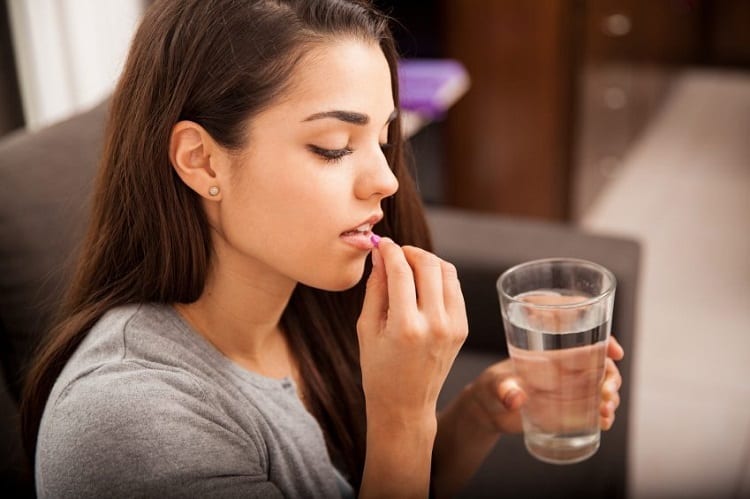
This may sound like a drag, and if you don’t take any medications then this doesn’t apply to you, but this does have relevance in getting the perfect tan.
Some medications are photosensitive, meaning they react poorly in the sun. This doesn’t mean you can’t tan, but that you have to find out how much your body can take. This is information that your doctor will be able to provide to you.
While it’s nobody’s first choice, if your medication interferes with your ability to tan, you can always explore spray-on or fake tans. You could also consult your doctor and ask if you’re ready to be off of the medication as well.
Tan Safely, Tan Effectively
Ten tips for effective and safe tanning in the bag. Now all that’s left to do is apply them, and get your skin to the fantastic shade you’ve always wanted.
While we urge you to remember to stay safe and avoid the unnecessary risks of skin cancer and premature skin aging, these tips can be used indefinitely to get an even tone every single time you go tanning.
